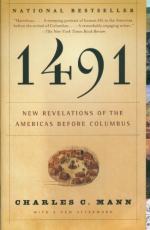|
This section contains 861 words (approx. 3 pages at 400 words per page) |

|
Summary
Two-hundred million years ago Eurasia and the Americas comprised one huge continent which was called Pangaea. Eventually, it broke into pieces and formed roughly what are today’s continents. This splitting apart virtually cut off all communication between the peoples of the new continents. When Columbus arrived in the New World he noted immediately that the trees, fruits and rocks were different than those in Europe.
Trade between the continents opened the people up to exotic foods and new resources. In the 1930s, the U.S. Civilian Conservation Corps planted millions of kuzu seedlings to help fight drought. The kuzu plant had been used in Japan to prevent erosion. People in the U.S. southeast were more than satisfied with the results; they even held kuzu festivals. After Columbus came and opened up the opportunities of the world to everyone, it...
(read more from the Chapter 10: The Artificial Wilderness Summary)
|
This section contains 861 words (approx. 3 pages at 400 words per page) |

|




